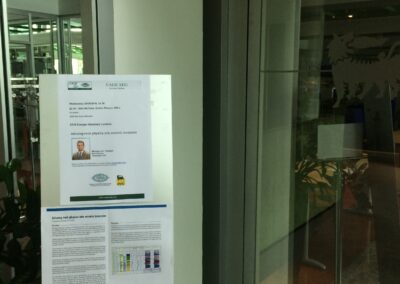2016 Europe Honorary Lecturer
Infusing rock physics into seismic inversion
by Michael A.C. Kemper
Ikon Science
Teddington, United Kingdom

ABSTRACT
Mick Jagger, philosopher and singer of The Rolling Stones back in1969, sang rather pessimistically “You can’t always get what youwant.” These words should ring true to all geoscientists: What wereally want are measures of rock properties (such as facies/rock types,porosity, saturation, etc.), but what we typically measure in the fieldare quantities like resistivity, density, seismic wiggles, etc., —signalsthat are “somehow” related (to a smaller or larger degree) to thesedesired rock properties.Obtaining profiles of rock properties from measured well logs iscalled petrophysical evaluation. Geologists, when they want to obtainestimates of overpressures, talk about prediction. Geophysicists,trying to obtain 3D images of rock properties from processed 3Dseismic data, have a perhaps better, more formal name for thisprocess: inversion.Seismic inversion is a difficult endeavor, for the simple reason that the earth filters out a lot of the usefulsignal as it travels from a source through the subsurface to the receivers. What we are left with is a bandlimitedsignal with restricted information content. This can be readily seen when we compare a seismictrace against a corresponding impedance profile: The latter typically becomes larger as we go deeper(compaction hardens the earth), whereas the former keeps wiggling around zero. What a mismatch!Even though the new broadband seismic acquisition technique increases the seismic information content(good!), the signal is still band-limited, and keeps wiggling around zero. Thus, the mismatch with thehardening impedance profile is still there.In that same song, Jagger also sings of a more optimistic moment: “If you try sometimes, you might find… you get what you need!” — a sentiment I wholeheartedly agree with! Seismic inversion may bedifficult, and the information content of the seismic signal may be limited, but there are ever moresophisticated ways to perform seismic inversion, and that is what this lecture is all about.The trick really is that somehow we need to add information to the seismic inversion process that is notin the seismic itself. For instance, low-frequency information (as the seismic is band-limited), or highfrequencyinformation (for the same reason). Much of this lecture is about adding this extra information,because there are many ways to do this, though not all equally successful. We shall focus specifically onusing rock-physics models to better derive the extra information, because these are nothing other thanrelationships between what we get and what we want!Just to put the reader’s mind (and ears) at ease: I shall not be singing during the lecture.
Biography
Michael Kemper is a geoscientist/petroleum engineer with 28 years experience in geophysics,petrophysics, and reservoir engineering. He spent the first 13 years with Shell International in TheHague, Nigeria, and London, during which time he made a number of contributions to the interfacebetween petrophysics and geophysics.In May 1999, Kemper became team leader of petrophysics/petroacoustics at Ikoda Ltd., working on awide variety of projects. It is during this time that RokDoc, now one of Ikon Science’s main products,was started. As one of the cofounders of Ikon Science, Kemper now serves as director of research andinnovation. In this role, he is responsible for the development of new, innovative, and impactfulalgorithms and workflows in the area of rock physics, seismic inversion, and numerical earth modelingin the Ikon Science software portfolio.







Recent Comments